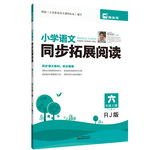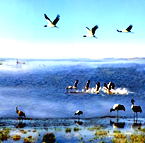题目内容
Choose the words or expressions and complete the passage
“What can you do when you have done____________ but mess up(搞砸) your whole life long?” These were the words I heard when I turned on the TV the other day. They were coming from one of the talk shows that are so popular on TV these days. I started to turn the channel but the words I had heard made me stop for a moment. I looked at the speaker of them. He ____________ more than 18 years old, but already he was writing off (认为……已失败) his life as a useless waste.
I wanted to shout at him:" You're not dead yet!"
It is so sad that so many people cannot ____________ their pasts and live in the present. There are so many people like that talk show guest. There are people still in their teen years thinking that their lives are over. There are people in their twenties who already think they have missed the boat to success and happiness. There are people in their thirties and forties who sit around complaining that life has passed them by. I want to shout to them all:" Wake up! You're still____________! What have you done today?" If you want a happy life, you can't just think about your past mistakes. If you want joy and love in your life, you have to choose them today. God gives us a new chance at life every time we wake up in the morning. It is up to us to catch ____________.
Today can be the beginning of a new life for each of us. We can choose joy right now. We share love today. We can live with hope starting at this moment. It doesn't matter how hard our past has been. Our present can be full of joy and our future can be full of happiness. It doesn't matter if we are eight or eighty—we can still make our lives wonderful. Life isn't over ____________ your last heartbeat. Start today, then, to make your heart beat with joy, love, and light.
1.A.nothing B.anything C.everything D.something
2.A.can’t be B.could be C.could have been D.couldn’t have been
3.A.get tired of B.get rid of C.take up D.take the place of
4.A.lively B.lovely C.alive D.live
5.A.this B.it C.that D.one
6.A.until B.after C.when D.while
 口算心算速算应用题系列答案
口算心算速算应用题系列答案 同步拓展阅读系列答案
同步拓展阅读系列答案Does winter mean a boring time at home? Winter can be interesting too! Let’s enjoy some winter fun across China together.
| Tengchong hot springs (温泉) Hot springs in Tengchong, Yunnan Province are very special. Some are near rivers and some are in forests. You can enjoy beautiful sights when having a bath. You can also try to cook eggs in the spring. The most famous hot spring in Tengchong is Dagunguo. The water temperature is about 97 °C. |
| Winter fishing in Chagan Lake December and January are the Chagan Lake winter fishing seasons. The lake is in Jilin Province. It is frozen in winter. People there cut holes in the ice and go fishing. They wear fur hats and coats. If you go there, you may want to share a bowl of their delicious fish soup and their joy. |
| Birdwatching at Caohai Lake Caohai Lake in Guizhou Province is a great place for birdwatchers. The lake covers an area of more than 30 square kilometers. More than 100,000 migratory birds (候鸟) live there during the winter. There are 230 kinds of birds there. Among them are 70 kinds of rare birds. Black-necked cranes, the only plateau (高原) cranes in the world, fly to the lake between October and November and leave in March and April. |
1.You can ________ in the hot springs in Yunnan.
A.have a bath B.see plateau cranes C.see ice D.cut holes and fish
2.If you want to see black-necked cranes, you can go to ________.
A.Tengchong hot springs B.Chagan Lake
C.Caohai Lake D.Dagunguo
3.Chagan Lake is in ________.
A.Tengchong B.Yunnan Province C.Jilin Province D.Guizhou Province
4.There are ________ kinds of rare birds in Caohai Lake.
A.100,000 B.230 C.97 D.70
5.Which of the following is TRUE according to the passage?
A.In winter, Chagan Lake is hot and you can cook eggs in it.
B.Black-necked cranes may fly to Caohai Lake in August.
C.October and November are the Chagan Lake winter fishing seasons.
D.Caohai Lake is over 30 square kilometers in size.




